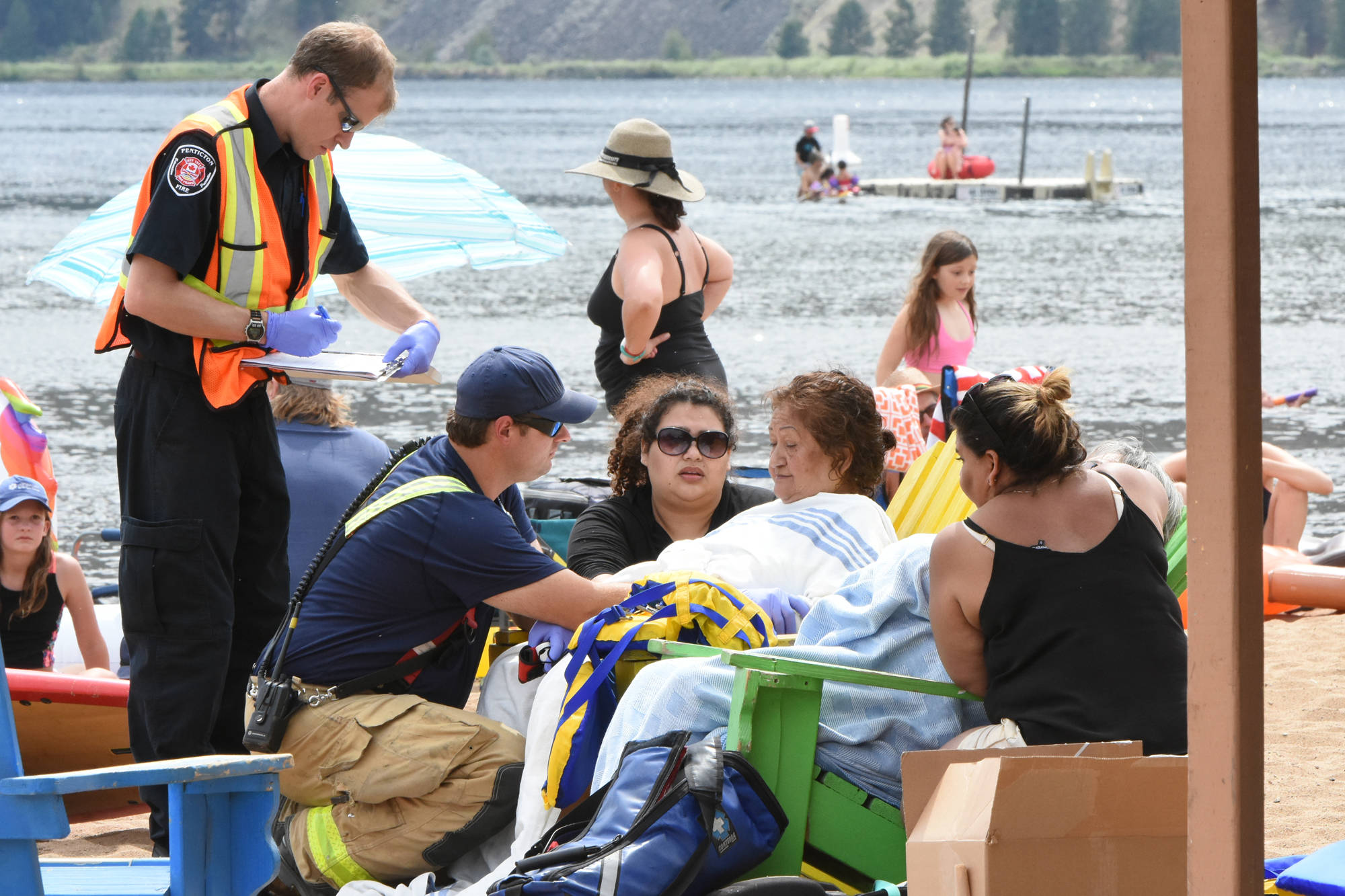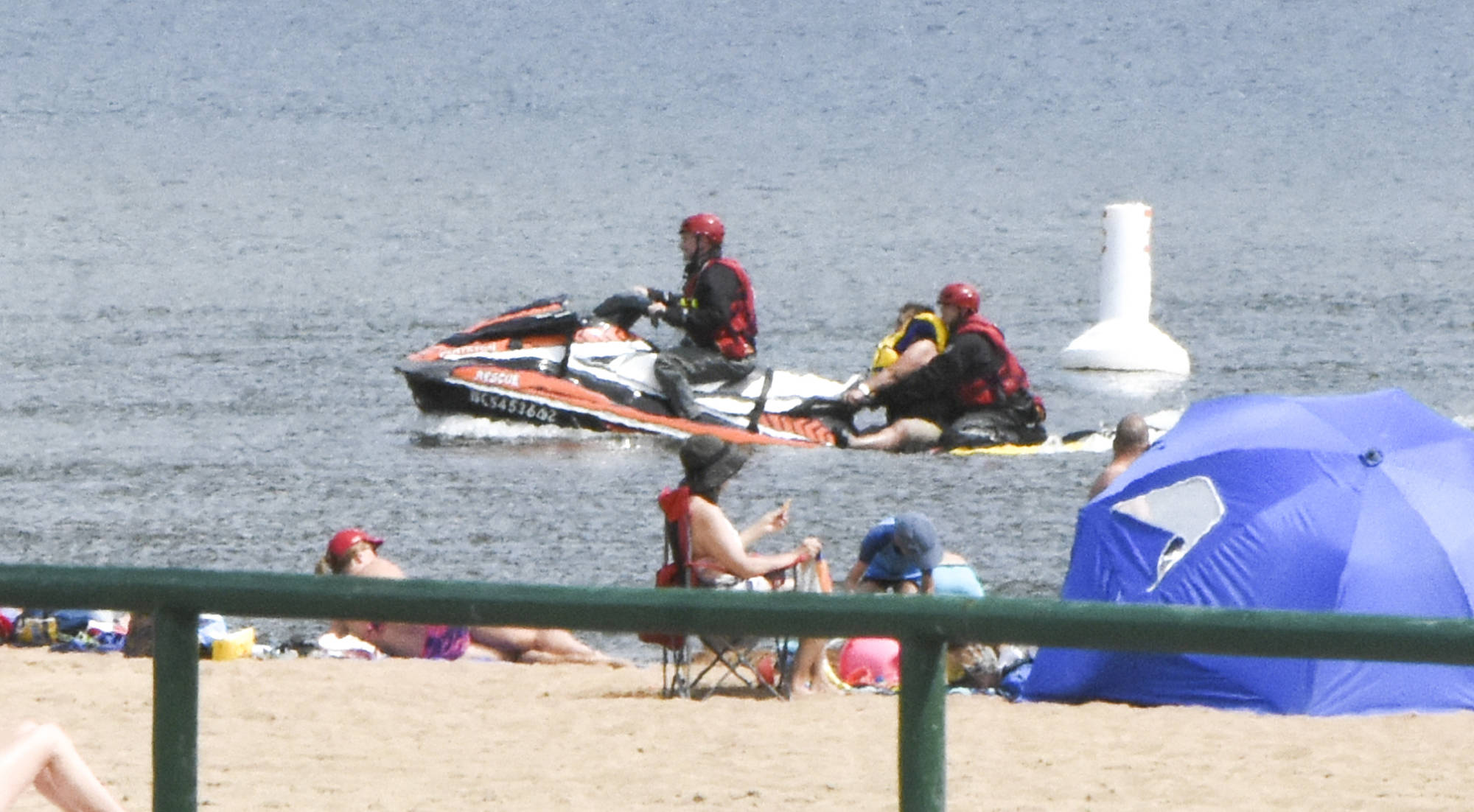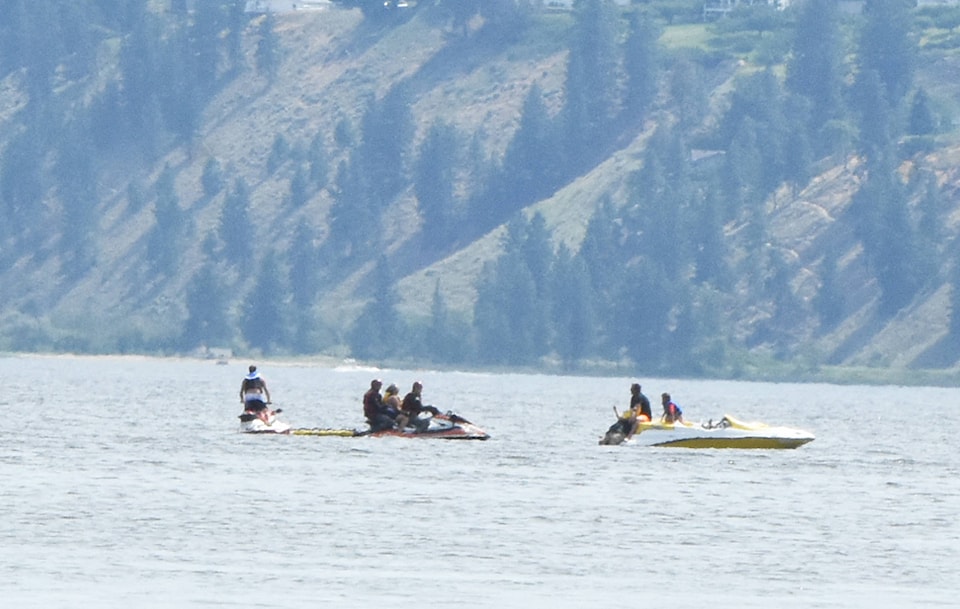Two potentially deadly incidents, the latest on Wednesday, have resulted in more warnings for those floating the Okanagan River Channel.
Around 2 p.m. Wednesday, Penticton Fire Department’s Marine Rescue Unit with help from Good Samaritans rescued two women in their 60s from Skaha Lake after they failed to stop at the south end of the channel while tubing.
“They had life preservers on but they got into the water,” said acting Capt. Wes Swaren who was at the scene when the women were brought to shore at Sudbury Beach by boat and personal watercraft. “They were probably treading water for 25 to 30 minutes and they were getting hypothermic and were exhausted. They seem okay but are under observation by EHS (Emergency Health Services).”
On shore, the women with concerned relatives at their side, were given warm blankets and taken to the ambulance for further observation.
According to Fire Chief Larry Watkinson the fact the women were wearing personal floatation devices may have been the difference between life and death.
“Otherwise you can imagine the outcome of this call. I mean they may have been cold but at least they weren’t drowning,” he said. “Wearing life jackets they’re still alive instead of perishing out there.
“People also really need to be aware of their surroundings and the exit points.”
According to Coyote Cruises manager Melissa Kruger the women were not customers of the company which rents floatation tubes and boats but had purchased tickets for the company’s bus, which transports riders to and from the start and stop points.
“We have made some changes since yesterday (Wednesday) to get people in the water to be more aware that the end (of the channel) is near,” she said. “Just having someone walking up the river a little bit yelling ‘paddle over to the right side’ and upping our staff members at the end, not only for our customers but the public as well.
“Our employees do jump in to assist people if we can see they’re not going to make it and swim out and bring them in.”
She added there has been a large number of signs put up along the channel in recent years to alert people of their location.
As well, the company regularly has safety meetings and has warnings at the Riverside start point about the potential dangers, including that of tying tubes and rafts together.
But despite those warnings people continue to ignore the advice including a group several weeks ago whose joined floatation devices got hung up on the abutment of the new bridge, Satikw Crossing, at Green Avenue West.
“These people had done what is always not advised to do, they tied the tubes together and of course they split, one goes one side and one goes the other and the force of the water pulls them and the people can get sucked under and the danger occurs,” said Deputy Fire Chief Chris Forster. “They were absolutely fortunate and by the time our guys got there the people had fallen off or gotten off the rafts and over to shore but the tubes were stuck on the thing so our guy went over and pulled out a knife and cut the rope.
“You never know, it’s great if you just fall out of your raft and float down but if you flip and your arm gets caught up in the rope then once again you’re pinned and you’re usually pinned underwater, not above water.”
Related: Man drowns in rafting incident on Channel
He referenced the death of a 20-year-old man who died last year after getting tangled up at the bridge at Green Mountain Road with four others who had tied their floatation devices together.
“This guy had actually tied himself to the tube and as soon as it flipped over he was now trapped underwater and he couldn’t be released,” said Forster. “Other than cutting the rope there’s no release.
“The other problem is Joe Public swims out and tries to save someone and ends up drowning because they pull them down.”
There were at at least two other similar incidents last year. Luckily firefighters were able to free one person in time and the others escaped on their own.
Forster added that even with speciality training for such rescue techniques, there is an inherent danger for first responders in those situations.
“We do annual training and our instructor even says you’ve got to hope this never happens to you,” he said. “It’s not one of those things you train for and you’re guaranteed it’s going to work, hopefully it will work for us and that’s with PFDs and the best scenario, so for the average person who doesn’t even have a PFD, it’s usually not a great outcome.”


